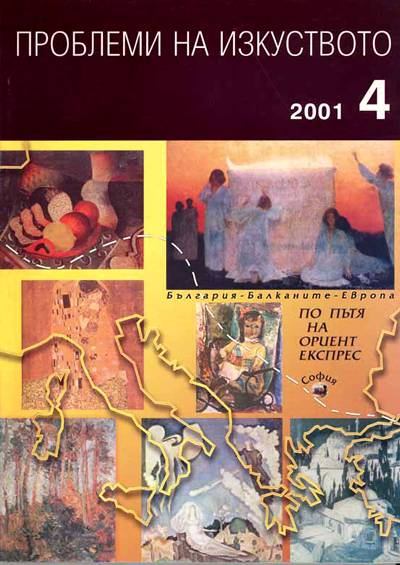Монументалният цикъл "Славняска епопея" на чешкия художник Алфонс Муха и България
The Monumental Cycle "Slavonic Epopee" Of the Czech artist Alfons Moucha and Bulgaria
Author(s): Rumyana DonchevaSubject(s): History, Fine Arts / Performing Arts, Cultural history, Visual Arts
Published by: Институт за изследване на изкуствата, Българска академия на науките
Summary/Abstract: Five out of the twenty paintings of the monumental oil painting cycle Slavonic Epopee ( l910 - 1928) reveal Alfons Moucha’s interest in the Bulgarian cultural and political history; these five are the following: The Introduction of Slavonic Liturgy in Great Moravia (863 - 880)”, “King Simeon of Bulgaria (889 - 927)”, “Mount Athos”, “Slavonic Dynasties Alliance”, and “Apotheosis of Slavicism”. The elements of Byzantine artistic culture occupy a significant place in the Slavonic Epopee paintings on Bulgarian themes. Owing to the inspiration ensuing from the art system of Byzantine art, which is close to the Bulgarian one, Moucha has established his original art nouveau style, which at the end of the 19 century enriched the overall pattern of the European art nouveau with appreciable impulses. The author outlines the strong appreciation of Bulgaria and the Bulgarians of the Slavonic Epopee in the 1920-s. She has indicated also the criticism on the Epopee in the Czech media of 1920-s and 1930-s. Even in the 1980-s in Czechoslovakia, the set of ideas and the artistic implementation of the Slavonic Epopee are co measured in a criticizing manner with the academic trends of the second half of the 19th century. The author points out the possibility of taking a somewhat different attitude towards Alfons Moucha’s Epopee on the basis of the rehabilitation, from nowadays’ point of view, of academism and symbolism in European painting. The Pictures of the Slavonic Epopee series, including those of Bulgarian subject matter and themes, undoubtedly expand the life-length of the European art nouveau that occurred in the late 19th century. This series strengthens in the European aspect the existence in the first decades of the 20th century of a type of artistic works where it is admissible to combine the art nouveau stylistics, which is subdued to conditionality and decorativeness, linearity and synthetism, with the manifestations of naturalism, impressionism, post-impressionism.
Journal: Проблеми на изкуството
- Issue Year: 2001
- Issue No: 4
- Page Range: 38-43
- Page Count: 6
- Language: Bulgarian
- Content File-PDF

